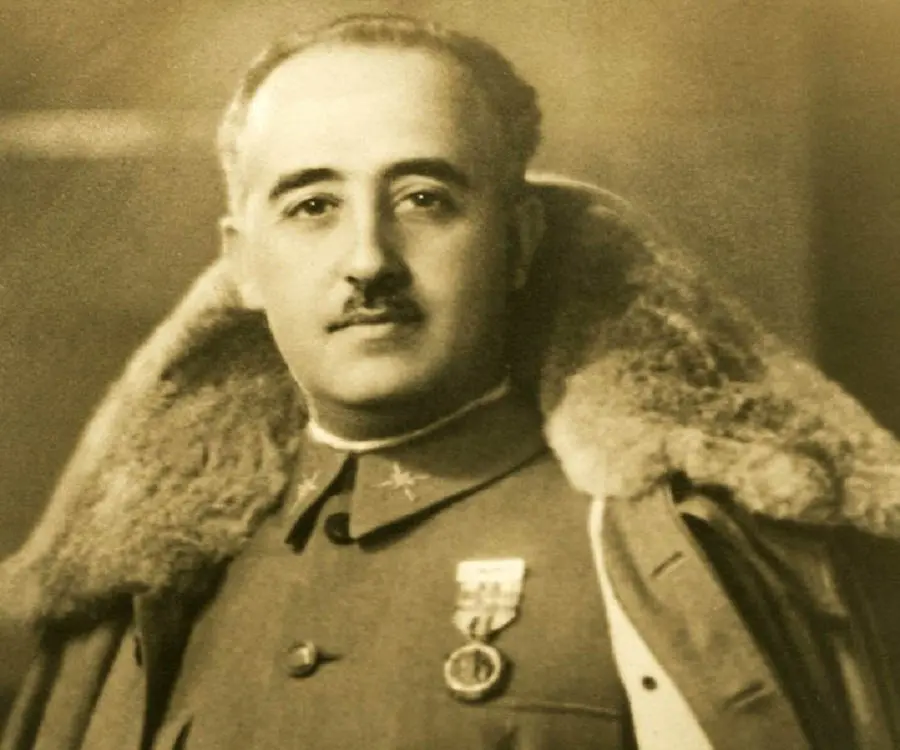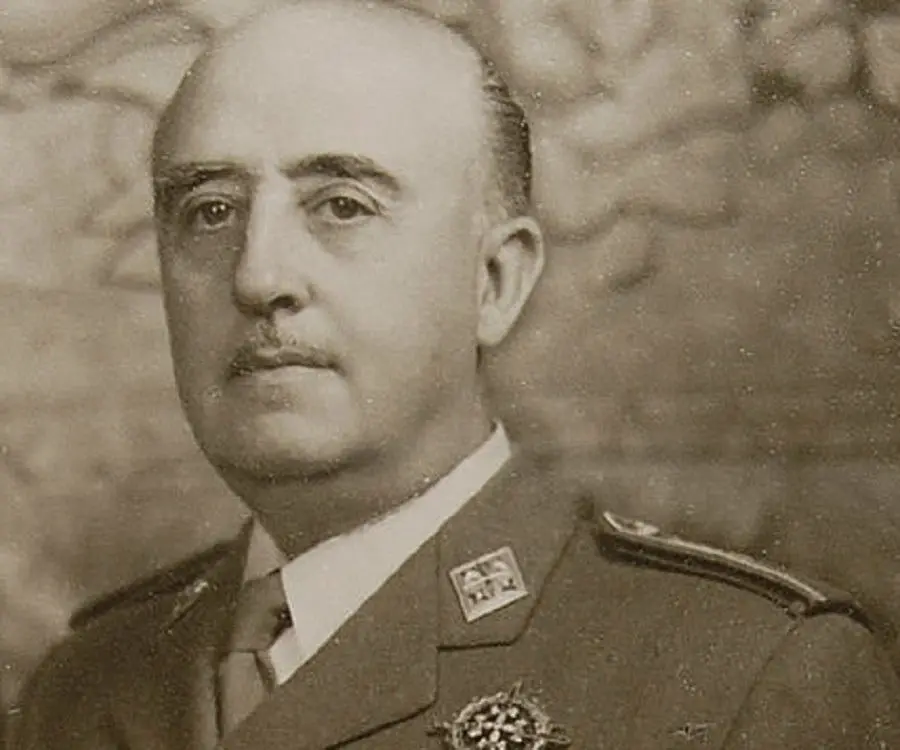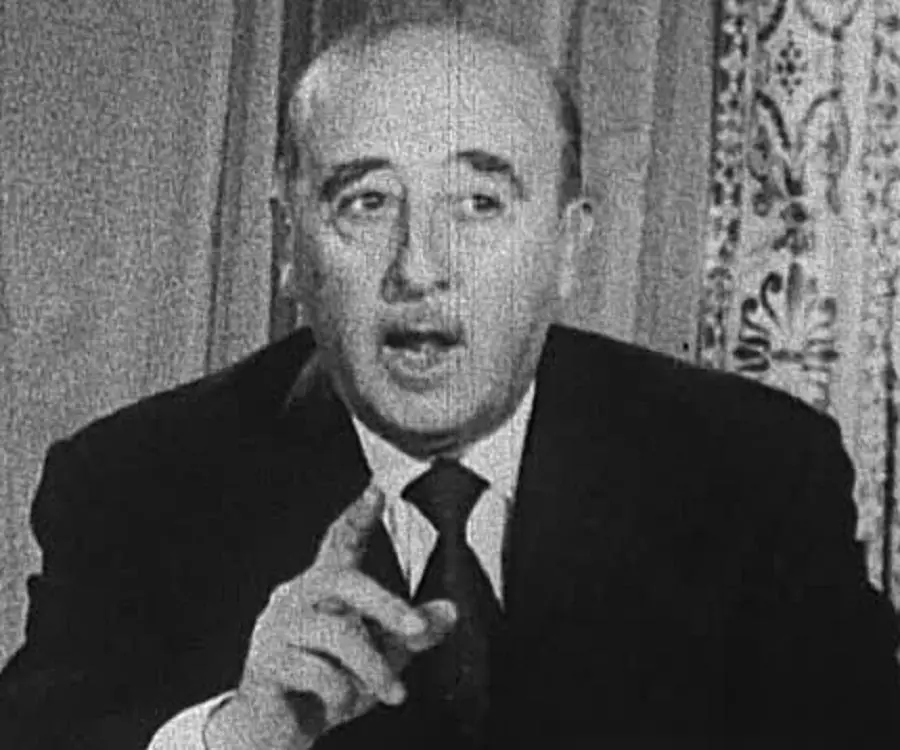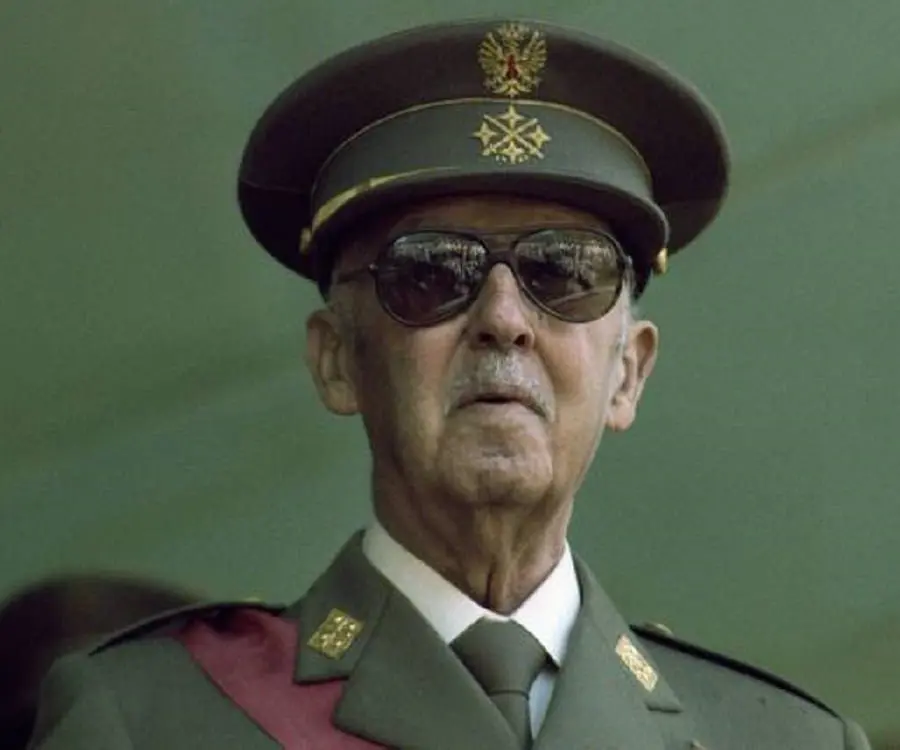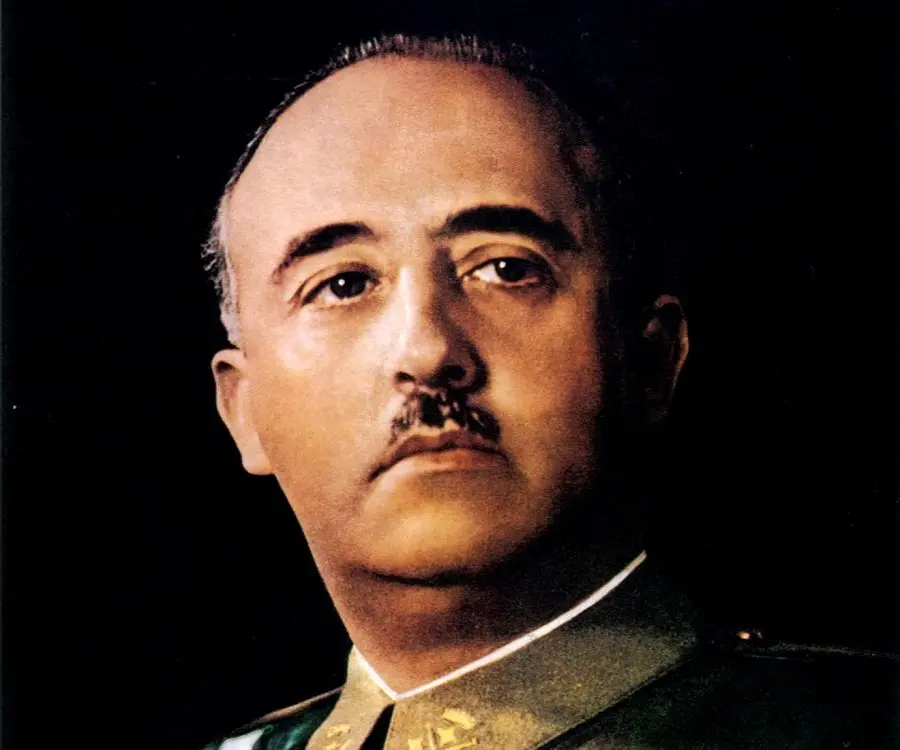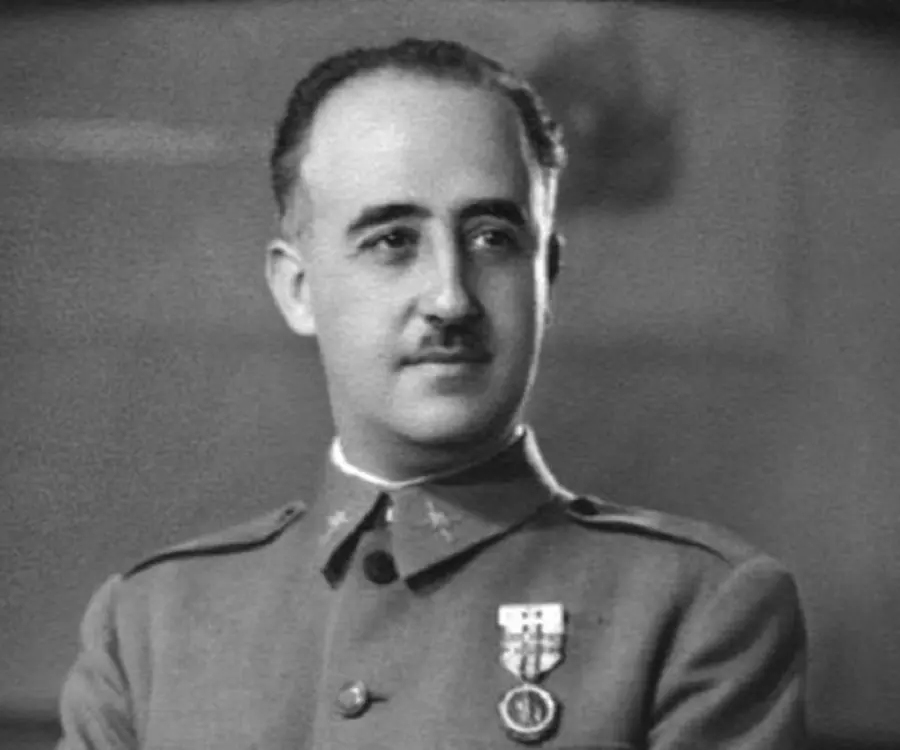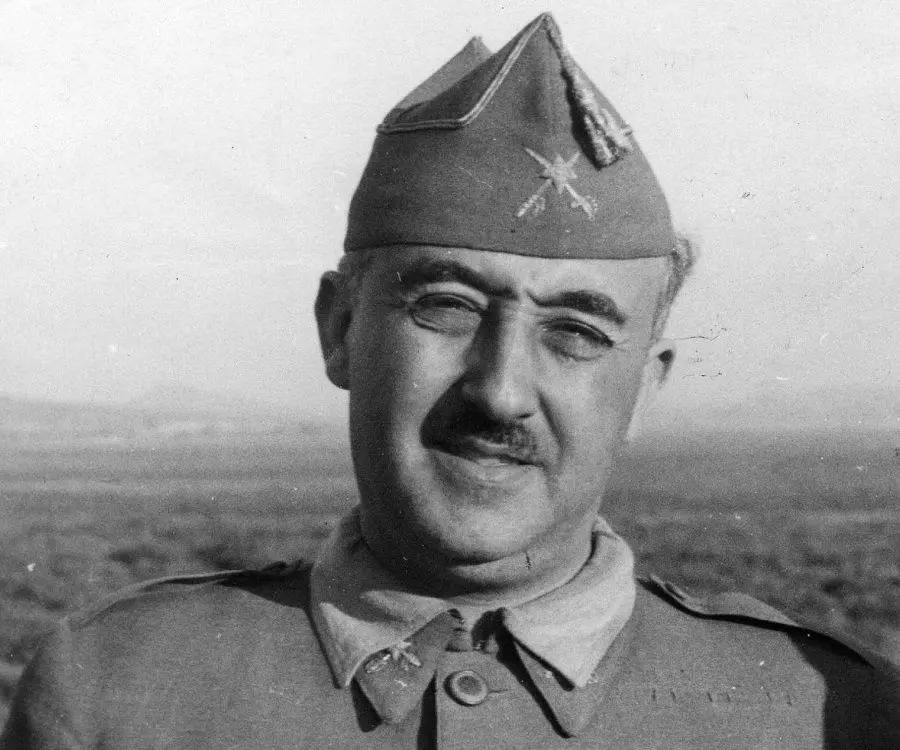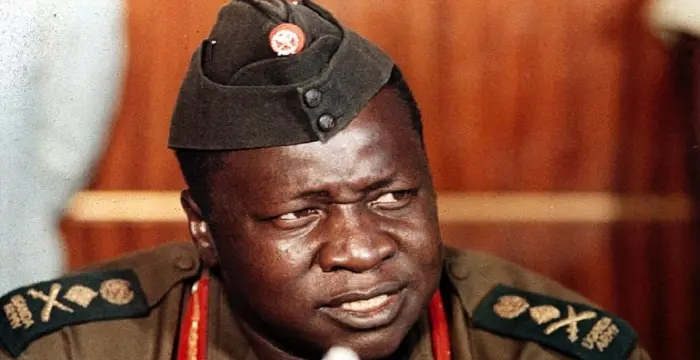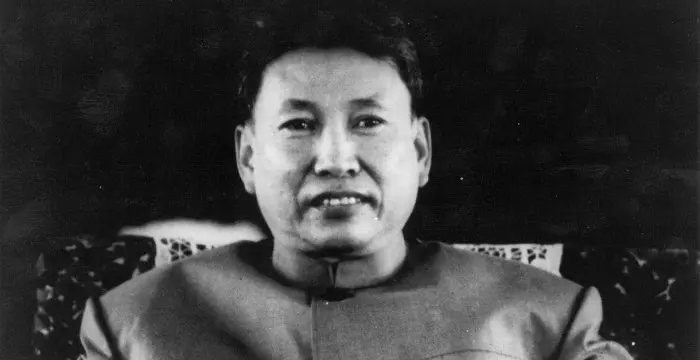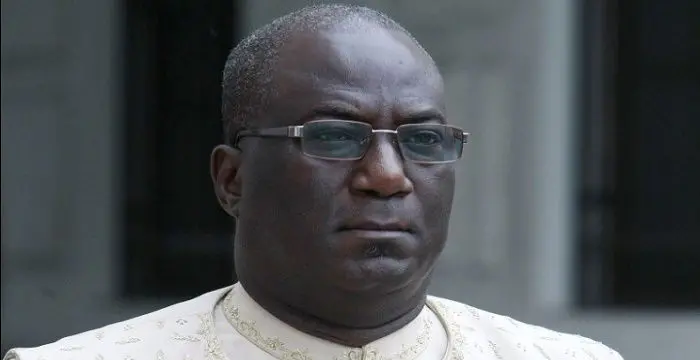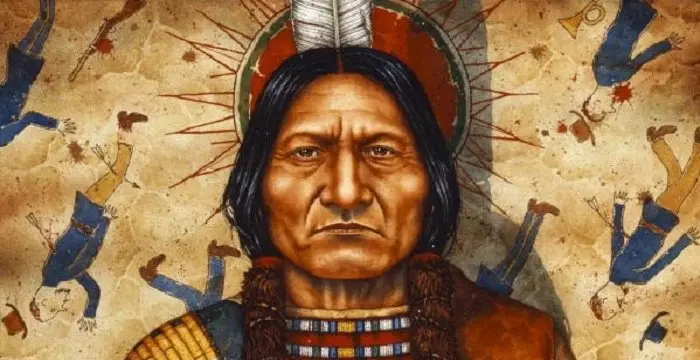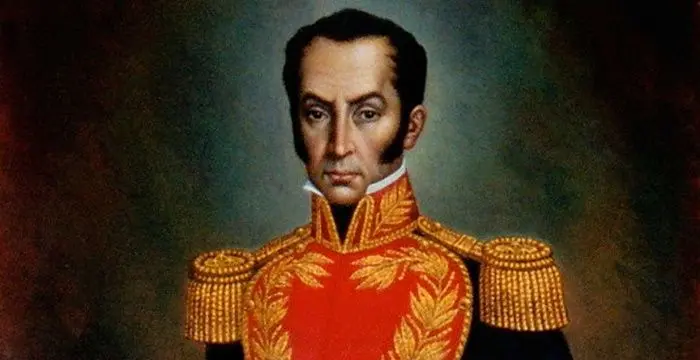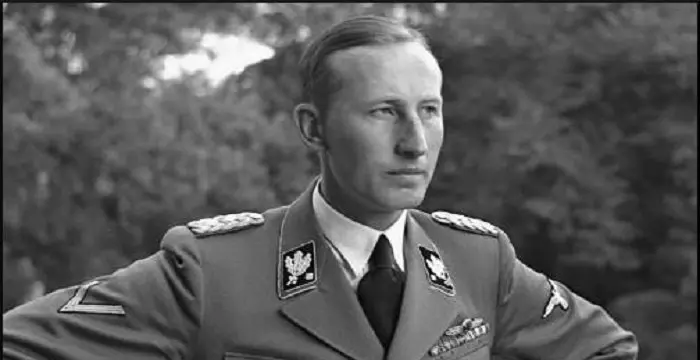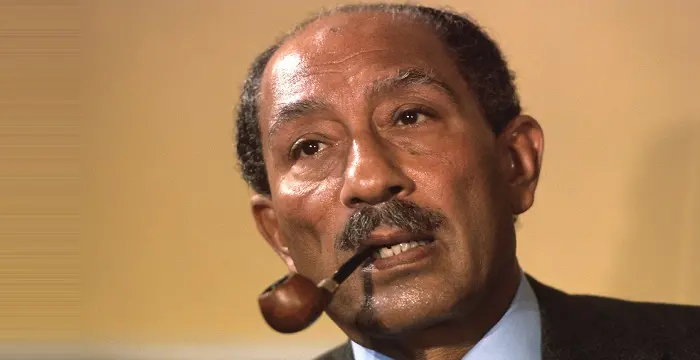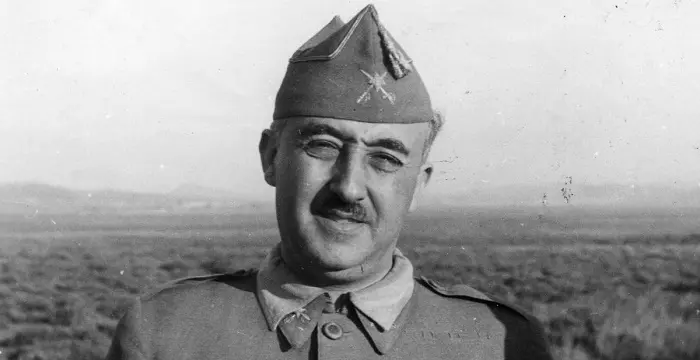
Francisco Franco - Dictator of Spain, Timeline and Family
Francisco Franco's Personal Details
Francisco Franco was a Spanish general who took control of Spain after the Spanish Civil War (1936–1939) and established a military dictatorship
| Information | Detail |
|---|---|
| Birthday | December 4, 1892 |
| Died on | November 20, 1975 |
| Nationality | Spanish |
| Famous | Leaders, Military Leaders, Dictators, Dictator of Spain |
| Spouses | 1st Lady of Meirás, Carmen Polo |
| Siblings | María de la Paz Franco, María del Pilar Franco, Nicolás Franco, Ramón Franco |
| Known as | Francisco Franco Bahamonde |
| Childrens | 1st Duchess of Franco, Carmen Franco |
| Birth Place | Ferrol |
| Political Ideology | Political party - Falange Española Tradicionalista y de las JONS |
| Religion | Catholicism |
| Height | 163 |
| Gender | Male |
| Father | Nicolás Franco y Salgado-Araújo |
| Mother | María del Pilar Bahamonde y Pardo de Andrade |
| Sun Sign | Sagittarius |
| Born in | Ferrol |
| Famous as | Dictator of Spain |
| Died at Age | 82 |
Francisco Franco's photo
Who is Francisco Franco?
Francisco Franco was a Spanish general who took control of Spain after the Spanish Civil War (1936–1939) and established a military dictatorship which he presided over until his death in 1975. An authoritarian ruler, he was highly ambitious from a young age. Hailing from a military family background, he rose to become the youngest general in Spain in the 1920s; he was also one of the youngest generals in Europe. His rapidly progressing military career was temporarily stalled after the fall of the monarchy in 1931 following which the leaders of the newly established Spanish Republic undertook a major military reform. His military career was eventually restored and he was appointed chief of the Spanish army’s general staff. He then conspired with several others and planned to overthrow the republic. He started a coup which led to the fierce Spanish Civil War and quickly emerged as the war’s leading military figure. He received considerable support from several fascist groups, especially Nazi Germany and the Kingdom of Italy, and went on to win the bloody war which left half a million dead. Establishing an autocratic dictatorship, he ruled as the nation’s undisputed leader until his death in 1975. He restored the monarchy before his death, making King Juan Carlos I his successor.
// Famous Dictators
Idi Amin
A Ugandan dictator, Idi Amin is remembered for his brutal regime and crime against humanity. Check this biography to know in details about his life, childhood, profile and timeline.
Pol Pot
Pol Pot was the Cambodian revolutionary who led the Khmer Rouge. This biography provides a glimpse of his childhood, career, profile and timeline.
Siaka Stevens
Siaka Stevens was the third Prime Minister of Sierra Leone who later became the first President of the country. This biography of Siaka Stevens provides detailed information about his childhood, life, achievements, works & timeline.
Childhood & Early Life
Francisco Franco Bahamonde was born on 4 December 1892 in Ferrol, Galicia, Spain. His father Nicolás Franco y Salgado Araújo was an officer in the Spanish Naval Administrative Corps. His mother’s name was María del Pilar Bahamonde y Pardo de Andrade.
He grew up with two brothers and two sisters, and was very close to his mother. His early life was troubled as his father was an eccentric and wasteful man.
He entered the Infantry Academy at Toledo in 1907, aged just 14. He graduated three years later as a lieutenant.
Career
Following his graduation he volunteered for active duty in the campaigns in Spanish Morocco and was transferred there in 1912 at age 19. The next year, he was promoted to first lieutenant.
An ambitious and determined young man, he was made the captain in 1915 and chosen to be second in command of the Spanish Foreign Legion in 1920, taking full command in 1923. His stature as a military officer continued to rise rapidly and in 1926, at age 33, he was promoted to brigadier general.
He was appointed the director of the newly organized General Military Academy in Saragossa in 1928. This was a tumultuous period in the nation’s history and in 1931, Spanish King Alfonso XIII was pressurized to hold democratic elections. People voted for a republic and this led to the fall of Spanish Monarchy. The former king went into exile and left Spain.
The leaders of the newly formed Spanish Republic initiated a major military reform which stalled Franco’s flourishing career. In addition, the General Military Academy was dissolved and he was placed on the inactive list.
In 1933, the conservative forces gained control of the republic and Franco’s military career was re-established. He was promoted to major general in 1934, and the same year he was called to quell a revolt by Asturian miners. He was successful in his mission and this earned him new respect as a military leader.
As his prominence began to increase, he began consolidating his powers. In May 1935, he was appointed chief of the Spanish army’s general staff, and in this position he began tightening discipline and strengthening military institutions.
Political chaos in the country continued and the Spanish parliament was dissolved following a slew of scandals. New elections were announced for February 1936 in which the leftist Popular Front won. However, the new government proved to be a weak one and was unable to stop the nation’s social and economic structure from further crumbling.
As the Spanish political system continued to disintegrate, Franco joined a group of rebels to plot a military conspiracy against the government. On July 18, 1936, Francisco Franco broadcast his manifesto announcing a full military rebellion, marking the beginning of the Spanish Civil War. The destructive war resulted in the death of several thousands and raged on for three years before the rebel government seized the reins of the country in 1939.
Franco, already proclaimed “Generalísimo” by the rebels, was now recognized as the Spanish head of state by Britain and France. Taking over control of the Spanish government, he assumed the official title of "Su Excelencia el Jefe de Estado" ("His Excellency the Head of State"). Initially he intended to restore Spain to her past glory, but the economic and social condition of the nation had deteriorated so much that this aim of his could not be achieved.
He began his rule as a dictator and Spain reeled under his oppression for several years following the end of the Civil War. He killed thousands of his political opponents, a number estimated to be somewhere between 15,000 and 50,000. Women were severely suppressed and subjected to numerous restrictions, and many of the citizens were forced into labor under the most undignified conditions.
His rule became less violent by the 1950s, however, the tight suppression on non-government trade unions and all political opponents from communist and anarchist organizations to liberal democrats and Catalan or Basque separatists continued.
A brutal authoritarian, he was not a popular ruler but his regime did bring about considerable economic development during the 1960s. Aging and ailing by now, Franco was viewed as an elder statesman. Unlike most dictators, he acknowledged his impending death and named Prince Juan Carlos, the grandson of Spain’s last ruling king, as his successor.
Major Works
Francisco Franco ruled over Spain as a dictator for 36 long years. A ruthless ruler, he was notorious for the numerous politically-motivated violent acts he instigated, mostly against political and ideological enemies. He is believed to have caused an estimated 200,000 to 400,000 deaths. The final years of his rule were relatively more liberal and Spain made considerable economic progress in the last two decades under him.
Personal Life & Legacy
In 1923, he married María del Carmen Polo y Martínez-Valdès. The couple had one daughter.
He suffered from Parkinson’s disease during his later years and died on 20 November 1975 in Madrid, Spain.
// Famous Military Leaders
Sitting Bull
Sitting Bull was a Teton Dakota Indian chief who led Sioux tribes in their struggle for survival on the North American Great Plains.
Simon Bolivar
Simón Bolívar was a Venezuelan military leader who was instrumental in independence of several Latin American countries from the Spanish rule. This biography profiles his childhood, life, achievements and timeline.
Reinhard Heydrich
Reinhard Heydrich was a high-ranking German Nazi official during the World War II. Check out this biography to know about his childhood, family life, achievements and other facts about his life.
Francisco Franco biography timelines
- // 4th Dec 1892Francisco Franco Bahamonde was born on 4 December 1892 in Ferrol, Galicia, Spain. His father Nicolás Franco y Salgado Araújo was an officer in the Spanish Naval Administrative Corps. His mother’s name was María del Pilar Bahamonde y Pardo de Andrade.
- // 1907He entered the Infantry Academy at Toledo in 1907, aged just 14. He graduated three years later as a lieutenant.
- // 1912Following his graduation he volunteered for active duty in the campaigns in Spanish Morocco and was transferred there in 1912 at age 19. The next year, he was promoted to first lieutenant.
- // 1923In 1923, he married María del Carmen Polo y Martínez-Valdès. The couple had one daughter.
- // 1928 To 1931He was appointed the director of the newly organized General Military Academy in Saragossa in 1928. This was a tumultuous period in the nation’s history and in 1931, Spanish King Alfonso XIII was pressurized to hold democratic elections. People voted for a republic and this led to the fall of Spanish Monarchy. The former king went into exile and left Spain.
- // 1933 To 1934In 1933, the conservative forces gained control of the republic and Franco’s military career was re-established. He was promoted to major general in 1934, and the same year he was called to quell a revolt by Asturian miners. He was successful in his mission and this earned him new respect as a military leader.
- // May 1935As his prominence began to increase, he began consolidating his powers. In May 1935, he was appointed chief of the Spanish army’s general staff, and in this position he began tightening discipline and strengthening military institutions.
- // Feb 1936Political chaos in the country continued and the Spanish parliament was dissolved following a slew of scandals. New elections were announced for February 1936 in which the leftist Popular Front won. However, the new government proved to be a weak one and was unable to stop the nation’s social and economic structure from further crumbling.
- // 18th Jul 1936 To 1939As the Spanish political system continued to disintegrate, Franco joined a group of rebels to plot a military conspiracy against the government. On July 18, 1936, Francisco Franco broadcast his manifesto announcing a full military rebellion, marking the beginning of the Spanish Civil War. The destructive war resulted in the death of several thousands and raged on for three years before the rebel government seized the reins of the country in 1939.
- // 20th Nov 1975He suffered from Parkinson’s disease during his later years and died on 20 November 1975 in Madrid, Spain.
// Famous Leaders
Edi Rama
Edi Rama is the current Prime Minister of Albania. Check out this biography to know about his childhood, life, achievements, works & timeline.
Tecumseh
Tecumseh was a Native American leader of the Shawnee clan. This biography profiles his childhood, life and timeline.
Khalifa bin Zayed Al Nahyan
Sheikh Khalifa bin Zayed Al Nahyan is the current President of the United Arab Emirates (UAE). Check out this biography to know about his birthday, childhood, family life, achievements and fun facts about him.
Anwar Sadat
Anwar Sadat was the third President of Egypt and has been awarded the Nobel Prize for his peace initiatives. To know more about his childhood, career, profile and timeline read on the following biography.
Leo Varadkar
Cam Leo Varadkar is the current Taoiseach—the Prime Minister—of the Republic of Ireland. Check out this biography to know about his childhood, family life, achievements and other facts about his life.
Swami Vivekananda
Swami Vivekananda was the chief disciple of Sri Ramakrishna, and was responsible for awakening India spiritually. Check this biography to know in detail about his life, profile and timeline.
Francisco Franco's FAQ
What is Francisco Franco birthday?
Francisco Franco was born at 1892-12-04
When was Francisco Franco died?
Francisco Franco was died at 1975-11-20
Where was Francisco Franco died?
Francisco Franco was died in Madrid
Which age was Francisco Franco died?
Francisco Franco was died at age 82
Where is Francisco Franco's birth place?
Francisco Franco was born in Ferrol
What is Francisco Franco nationalities?
Francisco Franco's nationalities is Spanish
Who is Francisco Franco spouses?
Francisco Franco's spouses is 1st Lady of Meirás, Carmen Polo
Who is Francisco Franco siblings?
Francisco Franco's siblings is María de la Paz Franco, María del Pilar Franco, Nicolás Franco, Ramón Franco
Who is Francisco Franco childrens?
Francisco Franco's childrens is 1st Duchess of Franco, Carmen Franco
What is Francisco Franco's political ideology?
Francisco Franco's political ideology is Political party - Falange Española Tradicionalista y de las JONS
What is Francisco Franco's religion?
Francisco Franco's religion is Catholicism
How tall is Francisco Franco?
Francisco Franco's height is 163
Who is Francisco Franco's father?
Francisco Franco's father is Nicolás Franco y Salgado-Araújo
Who is Francisco Franco's mother?
Francisco Franco's mother is María del Pilar Bahamonde y Pardo de Andrade
What is Francisco Franco's sun sign?
Francisco Franco is Sagittarius
How famous is Francisco Franco?
Francisco Franco is famouse as Dictator of Spain
